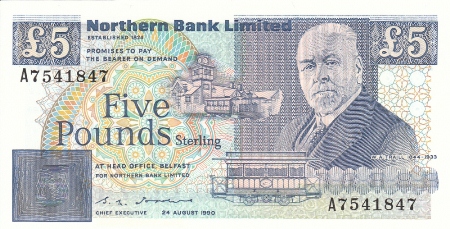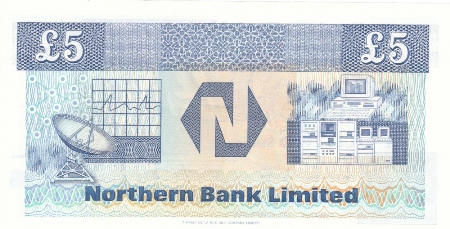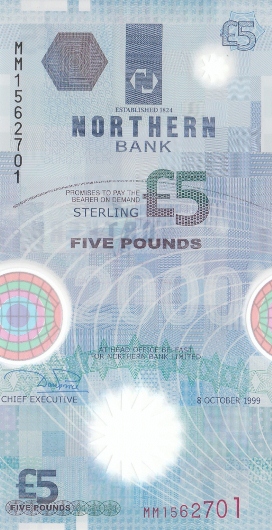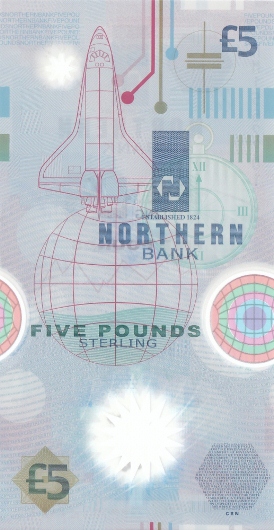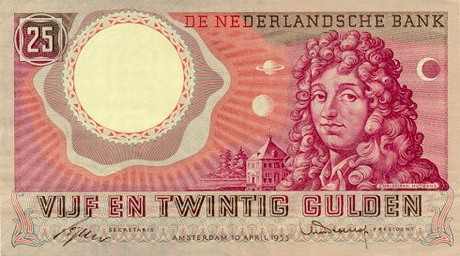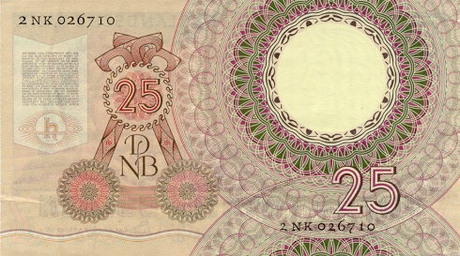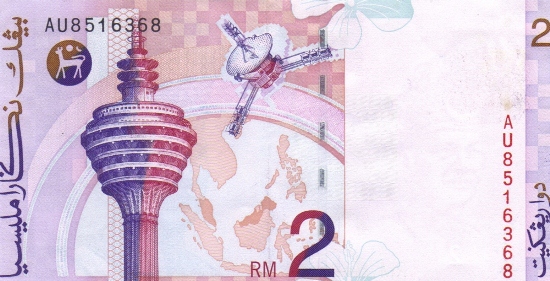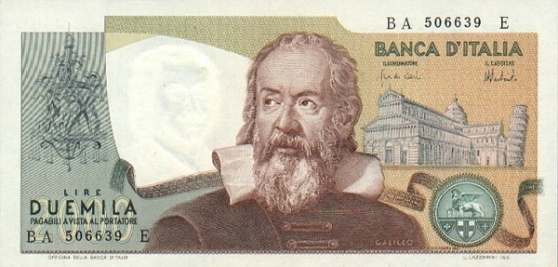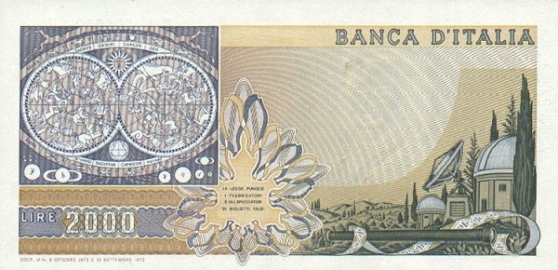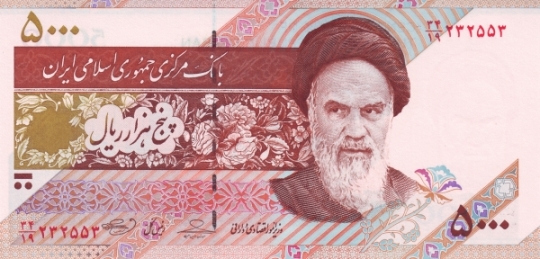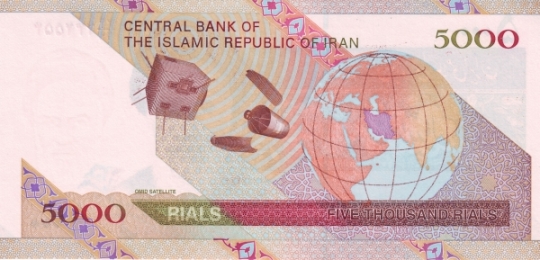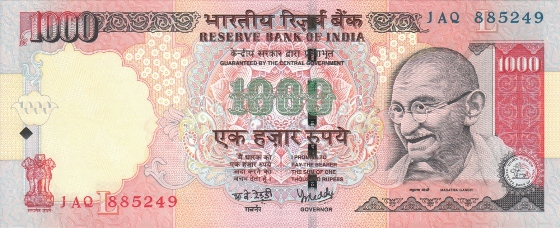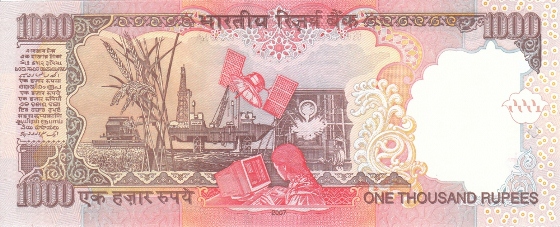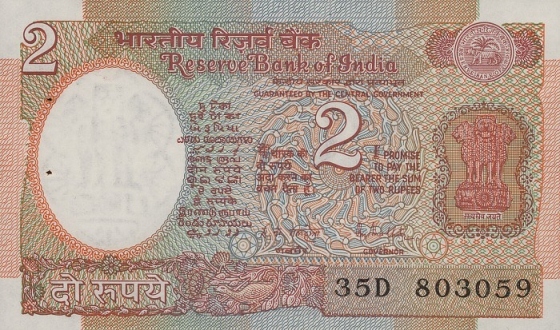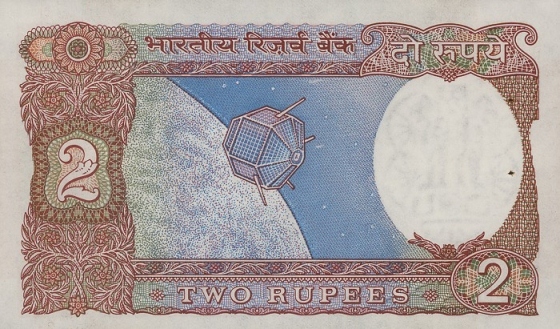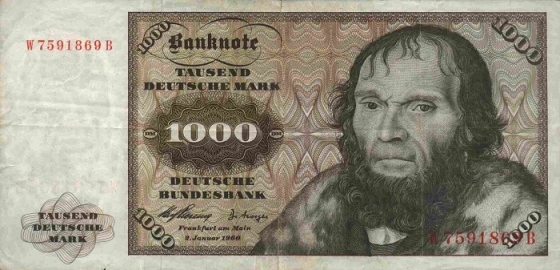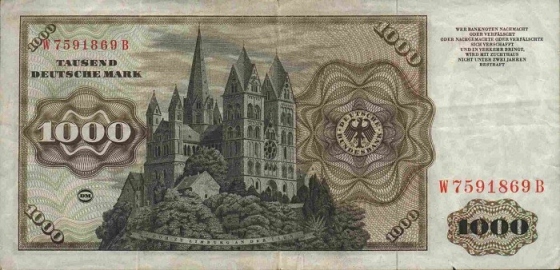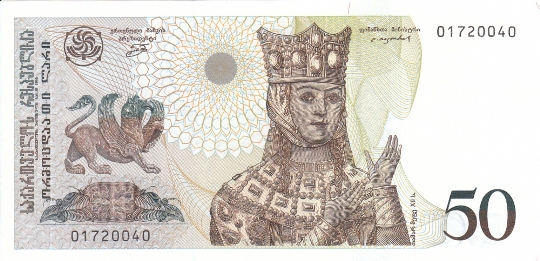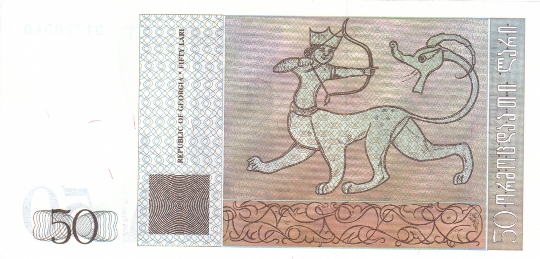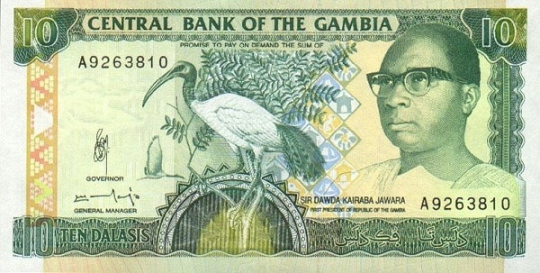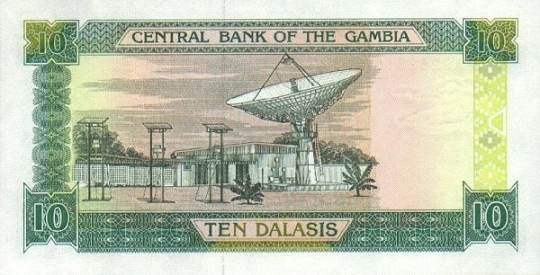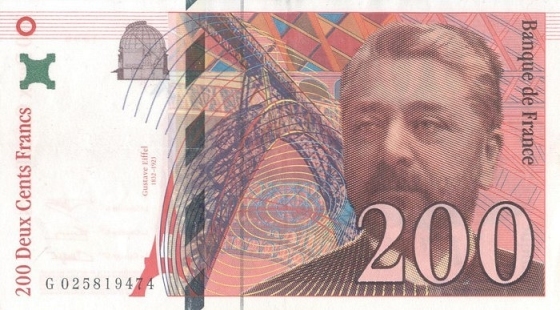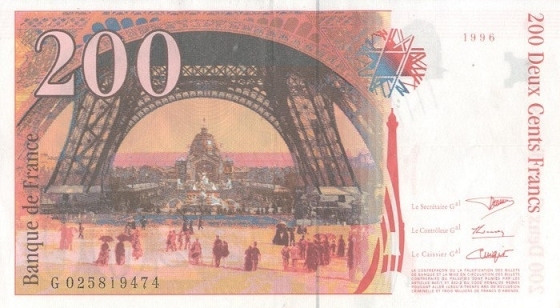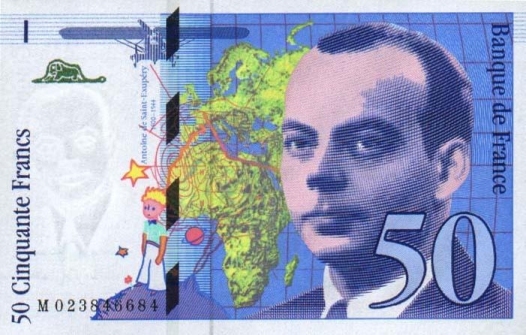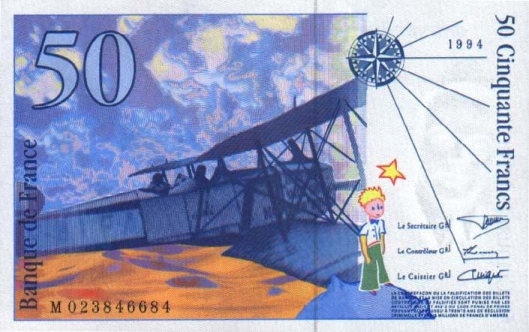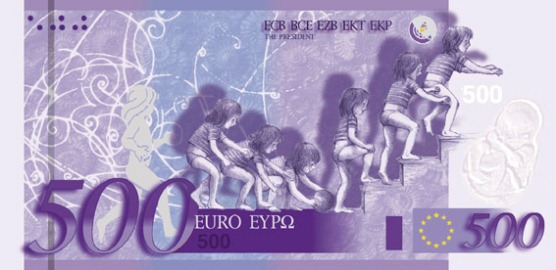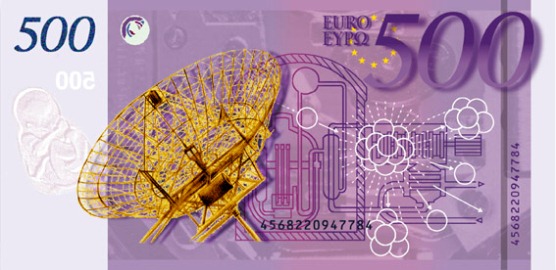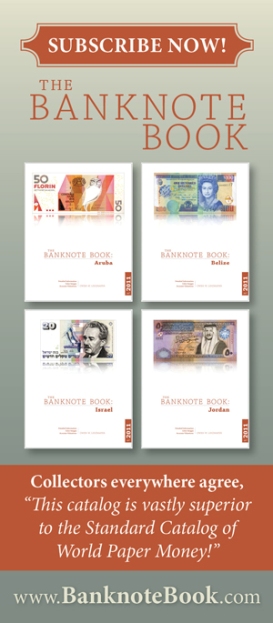Northern Ireland - 5/10/20/50/100 pounds - 1988-1990 - P193-197
The 1988 series of the Northern Bank in Northern Ireland is a series of 5 denominations with similar backs. On the back we can see a satellite dish antenna on the left. Following the £26.5 million pound robbery in 2004 at Northern Bank's money handling centre in Belfast, Northern Bank announced, on 7 January 2005, that all its notes were to be recalled and reissued in different colours and styles, and using the bank's new logo. The other denominations can be viewed after the click.
Read More
Northern Ireland - 5 pounds - 2000 - P202
This commemorative issue from Northern Ireland, issued by the Northern Bank in 2000, is a little bit bizarre. Because why is there an American Space Shuttle on a banknote from Northern Ireland? The polymer banknote was issued to commemorate the new milennium and shows the ascent of mankind. From the folder in which some of the banknotes were issued:
On the front at the foot, the beginning of the Universe, incorporating an Alpha motif. Moving up, we see the birth of our solar system with the Earth as a transparent coloured disc and the advent of Christianity depicted by the Star of Bethlehem in the top right corner. On the reverse, the large star at the foot now represents our sun and, as we travel upwards through waves of time, we reach our world, where man has conquered both land and sea. With the watch again representing time (its hand set at midnight) we are marking a new beginning, reaching through technology back towards space and the stars where it all began.
The space shuttle can be seen as a representation of mankind's goal to reach for the stars.
The Netherlands - 25 gulden - 1955 - P87
Isn't that nice? A banknote from my own country of The Netherlands! Depicted is the dutch scientist Christiaan Huygens (1629 - 1695). He was a prominent mathematician, natural philosopher, astronomer, physicist, probabilist and horologist. His work included early telescopic studies of the rings of Saturn (which he discovered) and the discovery of its moon Titan, the invention of the pendulum clock and other investigations in timekeeping. All of these can be seen on the front and back of this nice note.
Malaysia - 2 Ringgit - 1996 - P39
The back of this 2 ringgit note from Malaysia shows the MEASAT-1 satellite which was launched in 1996. The image of the satellite is not entirely correct however since the image shows three identical booms. This type of satellite however (the Pioneer 10/11-type) has actually two booms and a separate third longer and much slimmer boom.
Italy - 2000 lire - 1973-2002- P103
Talk about a banknote with a lot of imagery! What can we see on this 2000 lire note from Italy? On the front is the image of Galileo Galilei (1564 - 1642). On the back it shows a depiction of the landscape of Arcetri and the Arcetri Astrophysical Observatory, Galileo's telescope and a seventeenth century English celestial map depicting planets, constellations and signs of the Zodiac.
Galileo Galilei was an Italian physicist, mathematician, astronomer, and philosopher who played a major role in the Scientific Revolution. His achievements include improvements to the telescope and consequent astronomical observations and support for Copernicanism. Galileo has been called the "father of modern observational astronomy", the "father of modern physics", the "father of science" and "the Father of Modern Science".
His contributions to observational astronomy include the telescopic confirmation of the phases of Venus, the discovery of the four largest satellites of Jupiter (named the Galilean moons in his honour), and the observation and analysis of sunspots. Galileo also worked in applied science and technology, inventing an improved military compass and other instruments. Galileo's championing of heliocentrism was controversial within his lifetime, when most subscribed to either geocentrism or the Tychonic system.
It's almost impossible for me to describe all the contributions to science and discoveries he made, so I will just refer you to the extensive wikipedia article on his life.
Iran - 5000 rials - 2009 - P150
This 5000 rials note from Iran is all about astronomy. On the back of the note we see the Omid satellite which was launched by the Safir 2 carrier rocket (also depicted on the note). The two spacecrafts are shown above Earth with a highlighted Iran. The rocket with the satellite was launched on 2 February 2009 to coincide with the 30th anniversary of the Iranian revolution.
President Ahmadinejad said the satellite was launched to spread "monotheism, peace and justice" in the world. It is however a data-processing satellite for research and telecommunications. Omid was reported to have successfully completed its mission without any problems. It completed more than 700 orbits over seven weeks.
India - 1000 rupees - 2000 - P94
This banknote from 2000 shows images representing India's growing economical power. One of those images is a satellite, showing India's steps into space. Since launching its first satellite in 1975, India has put several satellites into orbit.
India - 2 rupees - 1976-1997 - P79
The back of this Indian 2 rupees note from 1976 shows the Aryabhata satellite. It was India's first satellite and it was launched by the Soviet Union on 19 April 1975. It was built to conduct experiments in X-ray astronomy, aeronomics, and solar physics. The spacecraft was a 26-sided polygon 1.4 m in diameter. All faces (except the top and bottom) were covered with solar cells. A power failure halted experiments after 4 days in orbit. All signals from the spacecraft were lost after 5 days of operation. The satellite reentered the Earth's atmosphere on 11 February 1992.
Federal Republic of Germany - 1000 mark - 1960-1980 - P24/36
The face on this 1000 mark note from the Federal Republic of Germany (or West-Germany) is of the German polymath Johannes Schöner (1477 - 1547). He was a priest, astronomer, astrologer, geographer, cosmographer, cartographer, mathematician, globe and scientific instrument maker and editor and publisher of scientific tests. When he lived in Bamberg, he owned his own printing company and published many maps and globes. The very first printed globe of the sky was made in his workshop in 1515.
In his own time he enjoyed a European wide reputation as an innovative and influential globe maker and cosmographer and as one of the continents leading and most authoritative astrologers. Schöner had also made still unpublished data of Mercury observations from Walther available to Copernicus, 45 observations in total, 14 of them with longitude and latitude. Copernicus used three of them in "De revolutionibus", giving only longitudes, and falsely attributing them to Schöner. The values differed slightly from the ones published by Schöner in 1544. In 1538, Georg Joachim Rheticus, a young professor of mathematics at Wittenberg, stayed for some time with Schöner who convinced him to visit Nicolaus Copernicus in Frauenburg. In 1540, Rheticus dedicated the first published report of Copernicus work, the Narratio prima, to Schöner. As this was well received, Copernicus finally agreed to publish his main work, and Rheticus prepared Copernicus' manuscript for printing. In Nürnberg, Schöner published in 1544 the astronomical observations of Regiomontanus and Walther, as well as manuscripts of Regiomontanus, which had been in the hand of Walther. A crater on Mars is named in his honor.
Georgia - 50 lari - 1995-2011 - P58/66/73
Since 1995 Georgia has issued several versions of its 50 lari note. On the back of the note we find an artistic interpretation of the astrological sign Sagittarius.
Gambia - 10 Dalasis - 1991-2001 - P13/17/21
The African nation of Gambia has issued several 10 dalasis notes with a satellite dish on the reverse. Above is the first one from 1991 (P13). Click below to see the other two issues from 1996 (P17) and 2001 (P21).
Read More
France - 200 francs - 1997 - P159
This French from 1997 is dedicated to the famous engineer Gustave Eiffel (1832 - 1923), most famous for his construction of the Eiffel Tower. The note depicts several of his constructions but the reason for this note to be included on this site is the image of the Observatory of Nice on the front for which Gustave Eiffel constructed the dome in 1885.
France - 50 francs - 1993 - P157
This one is an odd note in this space and astronomy theme blog but I couldn't resist mentioning it here. The note depicts French writer and aviator Antoine de Saint-Exupéry. He was born in Lyon in 1900 and disappeared in an air mission on 31 July 1944 off Corsica. His most famous story is Le Petit Prince, first published in 1943. The novella is both the most read and most translated book in the French language, and was voted the best book of the 20th century in France. It was translated into more than 250 languages.
Le Petit Prince is a poetic tale, with watercolour illustrations by the author, in which a pilot stranded in the desert meets a young prince fallen to Earth from a tiny asteroid. The prince begins by describing life on his tiny home planet: in effect, an asteroid the size of a house (which the narrator believes to be the one known as B-612). The story is philosophical and includes societal criticism, remarking on the strangeness of the adult world. For a synopsis of the story, please read the wiki article on the book.
France - 50 francs - 1946-1951 - P127

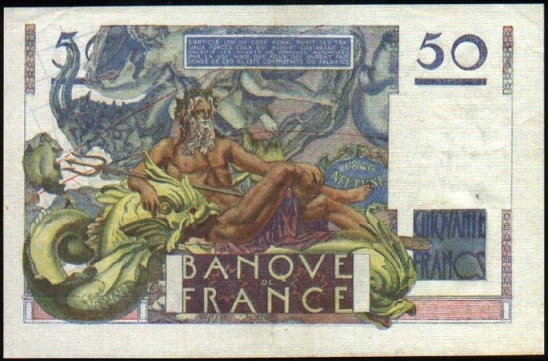
Urbain Jean Joseph Le Verrier (1811 – 1877) was a French mathematician who specialized in celestial mechanics. Le Verrier's most famous achievement is his prediction of the existence of the then unknown planet Neptune, using only mathematics and astronomical observations of the known planet Uranus. Encouraged by physicist Arago, Director of the Paris Observatory, Le Verrier was intensely engaged for months in complex calculations to explain small but systematic discrepancies between Uranus's observed orbit and the one predicted from the laws of gravity of Newton. At the same time, but unknown to Le Verrier, similar calculations were made by John Couch Adams in England. Le Verrier announced his final predicted position for Uranus's unseen perturbing planet publicly to the French Academy on 31 August 1846, two days before Adams's final solution was privately mailed to the Royal Greenwich Observatory. Le Verrier transmitted his own prediction by 18 September in a letter to Johann Galle of the Berlin Observatory. The letter arrived five days later, and the planet was found with the Berlin Fraunhofer refractor that same evening, 23 September 1846, by Galle and Heinrich d'Arrest within 1 degree of the predicted location near the boundary between Capricorn and Aquarius.From 1844 to 1847, Le Verrier published a series of works on periodic comets, in particular those of Lexell, Faye and DeVico. He was able to show some interesting interactions with the planet Jupiter, proving that certain comets were actually the reappearance of previously-known comets flung into different orbits. He died in Paris, France and was buried in the Montparnasse Cemetery. A large stone celestial globe sits over his grave. He will be remembered by the phrase attributed to Arago: "the man who discovered a planet with the point of his pen."
On the front of this 50 francs note issued between 1946 and 1951 can Le Verrier be seen holding a calliper and the Paris Observatory in the background. The back of the note shows Neptune (Roman god of the sea), with two dolphins Capricorn and Aquarius (who symbolize the discovery of Neptune), six-pointed stars and two red curves indicate the plane of the ecliptic and celestial equator.
European Union - 500 euro - not printed - PNL
What's this? A note from the European Union? Well, yes and no. Before the design of the 1st series of Euro banknotes was chosen a competition was held where designers could enter with their proposal for the new banknotes. In September 1996 the competiton closed and 44 proposals were entered. In December 1996 the winner was announced: the design by Robert Kalina we now have in our wallets.
One of the other proposals was from Patricia Vouez Uccle and Monique Golaire from Belgium. There design for the 500 euro note shows a large satellite dish antenna. Their entire set can be viewed here and the other designs that didn't make it, can be seen here.
« Previous page |
Displaying entries 31-45 of 60 |
Next page »
